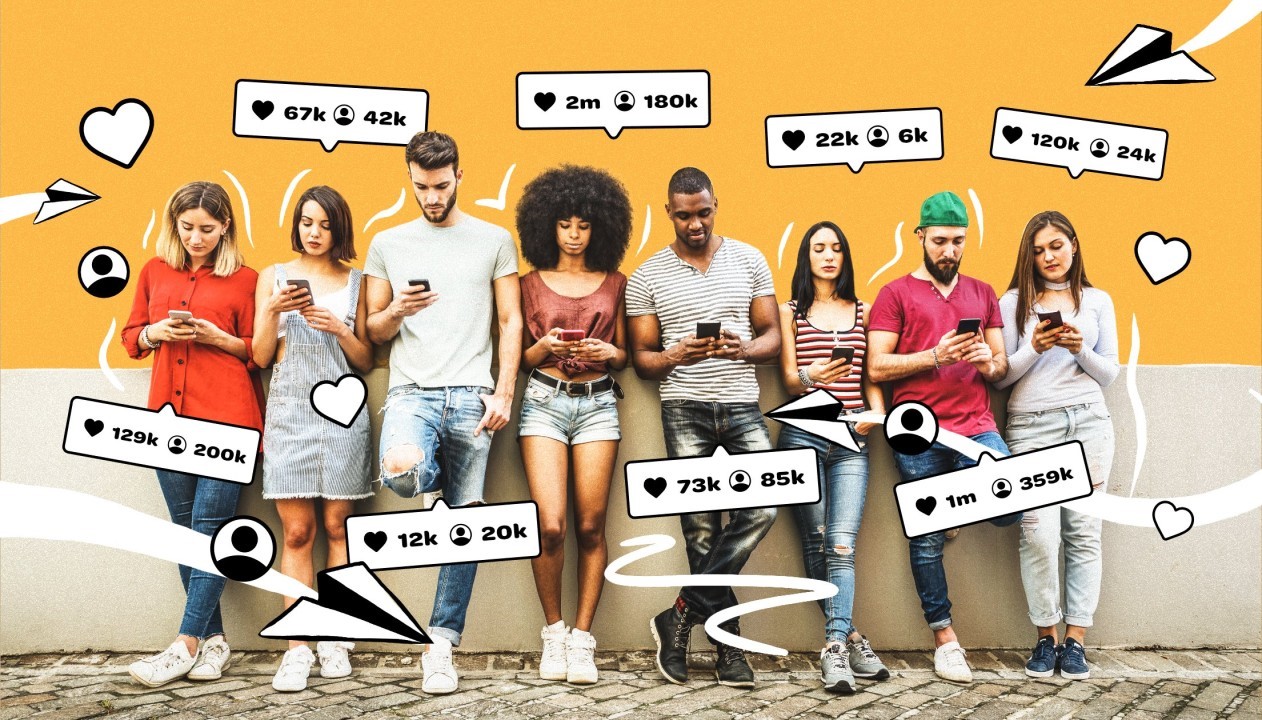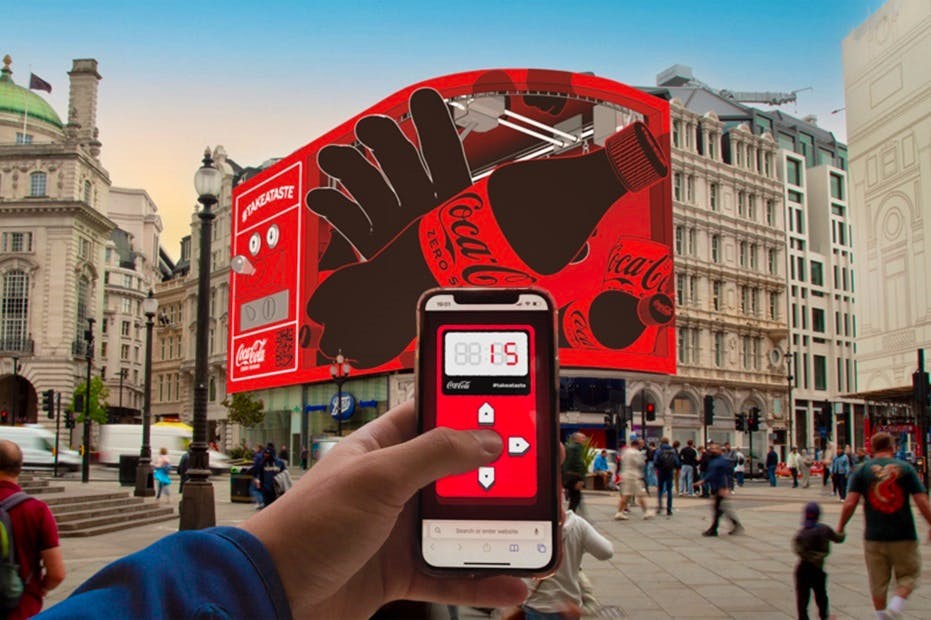Today, digital marketing trends are shaping the way businesses promote their brands online. Even billboards are designed using sophisticated software, copies are tested with AI and print content is checked by AI tools, reflecting the growing influence of technology in modern marketing.
However, digital marketing itself is undergoing large changes. Gone are the days of simple content marketing. Now, we need to optimize for AI, images, and voice search.
Plus, Google isn’t the only way to reach customers. In fact, it’s no longer even the only Search Engine that people use! Several AI platforms have revealed that they’ll be using Bing to train their algorithms.
Plus, more and more people are relying on social media, review websites and influencers to make buying decisions. So, social selling is on the rise on an unprecedented scale.
As the times are changing, we need to move with them or lose relevance. And we’re here to help you not just regain relevance but forge a path to success in digital marketing.
In this blog, we’re going to break down the 12 biggest Digital Marketing trends in 2025 so that you can make strategic decisions to create a killer digital marketing strategy for the times to come.
Here’s how they stack up:
Top Digital Marketing Trends for 2025: Table of Contents
- What are the Top Digital Marketing Trends for 2025?
- Scale the Summit of Your Industry with a Robust Digital Marketing Strategy
- Top Digital Marketing Trends: FAQs
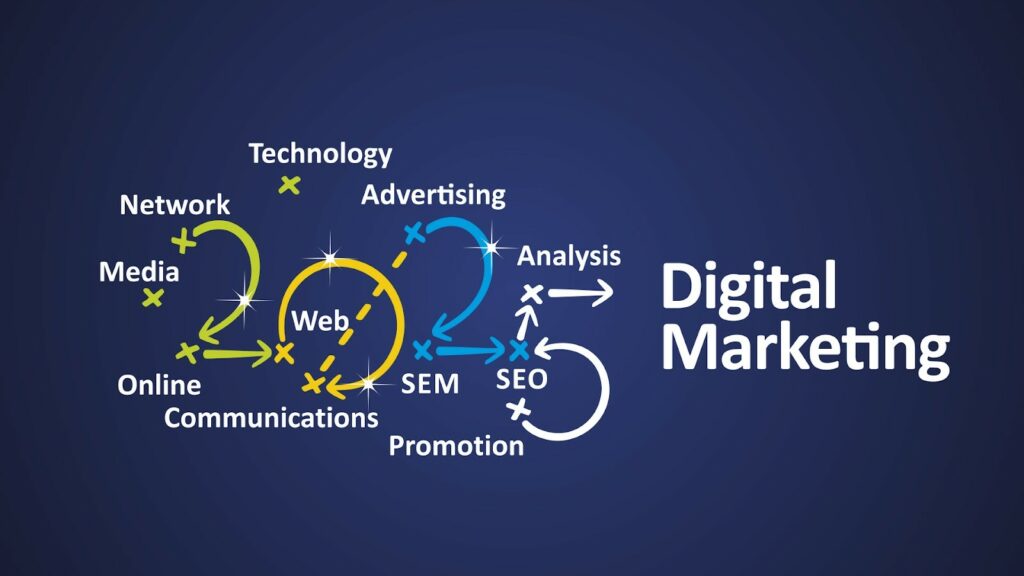
What Are the Top Digital Marketing Trends for 2025?
1. AI Optimization
2024 was the year AI went mainstream. Search for any keyword on Google, and chances are you’ll see an AI-generated answer tailored to your query.
But Google isn’t the only player on the AI market. AI tools like ChatGPT, DeepSeek and others are also entering the market at an unprecedented rate.
They are changing the way people search for ideas, consume information and, ultimately, buy things!
If we want to understand why AI optimization is one of the digital marketing trends in 2025, we must answer the question, “Why is AI search on the rise?”
The simple answer is convenience. AI search is the next step in the evolution of Zero-Click Search. The user no longer needs to visit a website in order to get an answer to their query.
So, it’s no surprise that 25% of all marketers are worried that AI Overviews will affect their traffic.
For marketers, this is a tough challenge. Earlier, we communicated with our users and customers using keywords. AI has changed this: now, AI has taken its place. And it can understand intent!
But it’s not all bad news…why? Because AI still needs to cite sources for its information! And that’s where AI Optimization comes in…as of 2025, a whopping 88% of all companies have already started implementing AI in their marketing strategies.
How to Optimize Digital Marketing for AI?
Okay, so AI is taking over search, and a lot of companies are rushing to optimize their content for AI search. So, how can you optimize your content for AI search? Here are some of the tried and tested methods that have worked for us:
- Attach an author bio with your informational content, like blogs, to signal trust in the AI algorithm.
- Focus on long-tail keywords and position your content to directly answer user queries.
- Always include FAQs with your blog. This will increase the chances of your being cited in search snippets.
- Write short, easily readable sentences.
- Use bullet points to make your content scanable.
- Bold important keywords to deliver maximum value to the reader as quickly as possible.
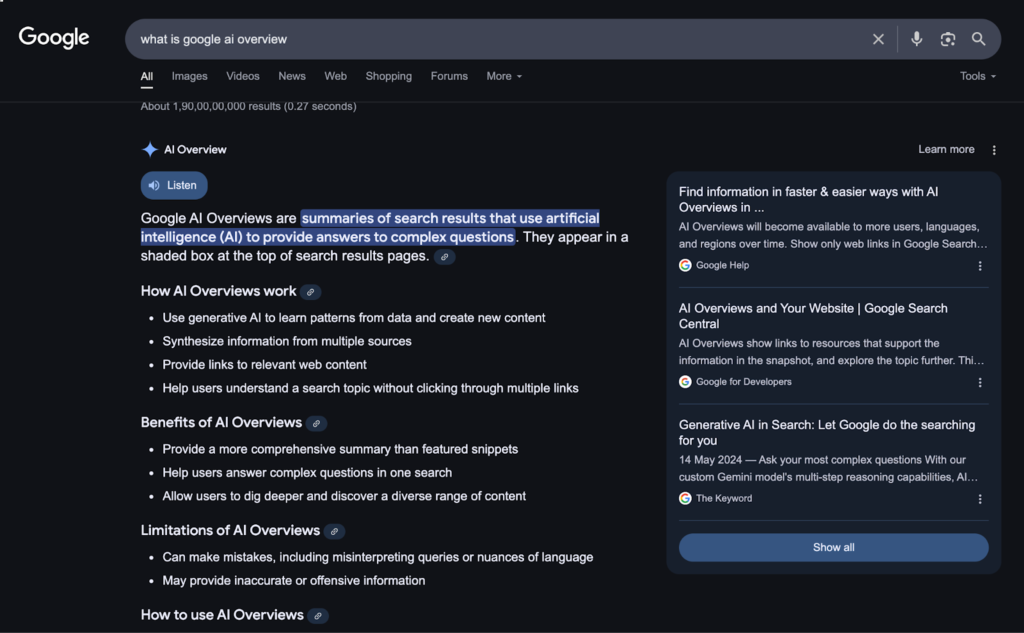
We know what you must be thinking: we’ve spent a lot of time discussing the rise of AI in digital marketing.
We hear you: but AI is the most significant disruption that is hurting web traffic. And where others see change, we must look for an opportunity!
2. Mobile Optimization
Smartphones: 20 years ago, no one had even heard of one, and now we can’t hear anything without them.
Today, more than 4.3 billion people use smartphones: that’s more than half the global population! And what’s more, nearly 60% of all internet traffic comes from mobile users.
It’s safe to say that almost half of your customers are using mobile devices to search for your services. From our research, we’ve found that the following industries rely heavily on mobile traffic:
- Shipping & Moving Services
- Ecommerce
- Food & Beverage
- Banking & Finance
- News & Entertainment
- Social Media
In short, regardless of what industry you operate in, you need to mobile optimization is critical if you want to increase traffic and revenue.
How to Optimize for Mobile Devices:
So, what can you do to rank on mobile devices and attract more users? Here’s how you can optimize your content for mobile devices:
- Create a visually responsive and compact mobile website
- Optimize media content for mobile screens
- Use the Viewport meta tag to instruct the browser on how to adjust a website for mobile devices.
In our experience, one of the best ways to optimize your content for mobile users is to create a dedicated mobile website. This will increase repeat customers as they know where to explore your offerings. It will also eliminate competition as you no longer have to rank again and again to attract repeat customers.
There are three options you can use to create a mobile website:
- A website builder app like Wix or Squarespace
- A headless CMS platform like Strapi or Directus
- A custom website development agency
We suggest using a CMS platform and hiring a website developer for a short development window and a sophisticated mobile app.
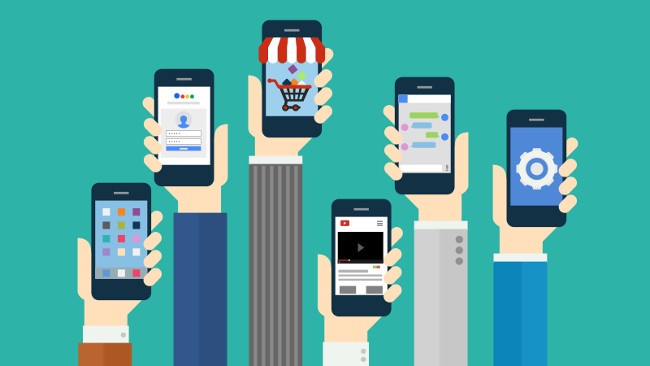
3. Short Video Content
While 2024 was the year of AI, we believe that 2025 will be the year of video content. There are several reasons for this.
For one, video content is appealing to all customer segments.
GenZ, which has grown up with the internet, consumes video content over and above anything else. This is evident from the rise of video applications like Instagram and TikTok.
Similarly, even adults and seniors respond very well to video content. A survey showed that a whopping 64% of users made a purchase after watching a video!
Another reason is that video content combines visual and auditory media to deliver information and messages. So, while earlier marketers used to combine text with infographics to deliver value to users, video content is taking this to the next level!
As of 2025, nearly 90% of all companies are already using video content to market their products and services…
How to Create Short Video Content:
If you, too, are looking to harness the power of video content, we’ve got you covered. Here’s how we recommend you incorporate video content into your marketing strategy:
- Use AI tools like Sora, Runway and Descript to create short videos
- Create a YouTube channel and periodically upload Vlogs to your channel
- Invite customers to submit User-Generated Content (UGC)
We highly recommend exploring the UGC segment. It’s extremely helpful in overcoming mover marketing challenges!
4. Influencer Selling
Did you know that 75% of people use social media to get purchasing advice?
While social media consists of many factors, such as forums, friends and followers, it is also the hub of influencer marketing!
For most marketers, influencer marketing is not new. It’s just the social media version of affiliate marketing. And we know what affiliate marketing looks like: we partner with speakers, thought leaders and others with authority in an industry, to position our products and services as attractive options.
Well, influencer marketing is the same, but it works much faster. It’s also more subtle. It’s a way of using social influence to position your offering where the customers are used to seeing them.
Now, you might think influencer selling might, at best, be a minor channel for additional revenue. If so, you’d be surprised to know that 45% of European Gen Zers are more inclined to buy fashion items they’ve seen influencers wear! In short, Gen Zers trust influencers more than celebrities!
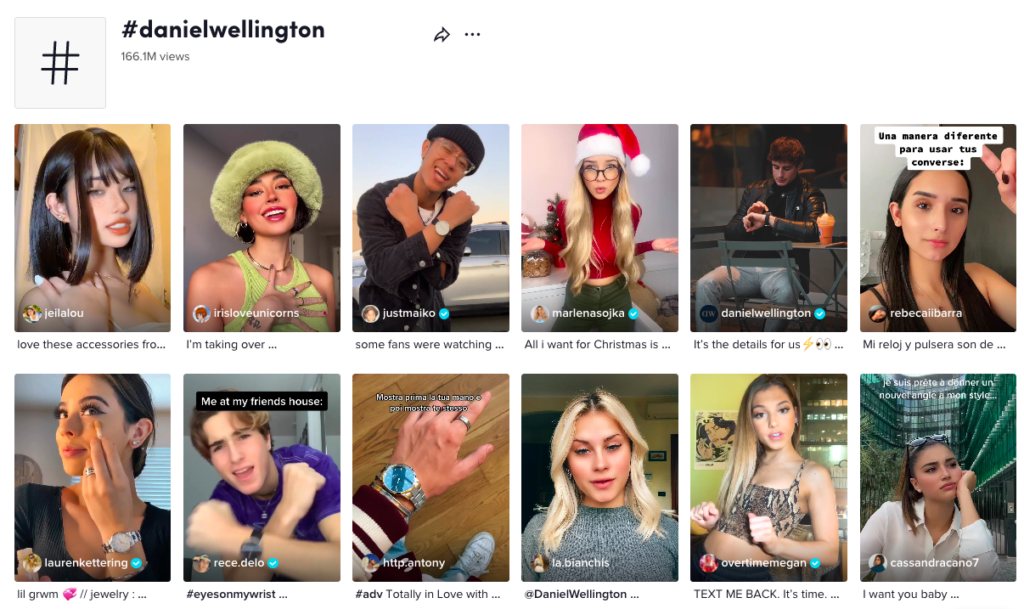
What is the reason for this rise of influencer marketing?
We believe that the rise of influencer marketing has to do with the authenticity and trust that influencers have built up over time. Since influencers are independent actors who don’t have loyalty towards any one brand, they’re thought of as more likely to provide objective recommendations.
How to Use Influencer Selling in 2025?
There’s a big difference between using influencers to sell fashion products compared to working with them to push shipping services, manufacturing goods and SaaS services. We get that. But that doesn’t mean that influencer selling is completely irrelevant for such industries.
Here’s how you can use influencer marketing in your industry:
- Building long-term relationships with thought leaders in the SaaS industry
- Using AI to search for the best influencers in your industry
- Partnering with real estate agents and realtors to position your shipping and moving services
- Taking online and offline speaking engagements for B2B conferences and in-person events
In short, no matter what industry you’re working in, there is a way to channel the power of influencer marketing to position your products and services.
5. Email Marketing
Email marketing is as old as the internet itself. Along with content marketing, it shares the honor of being a tried & tested high ROI sales strategy.
There’s a good reason for this: emails are more permanent compared to phone calls. While an email stays in an inbox and can be followed up on, phone calls don’t stay long in people’s memories. Plus, you can send mass emails faster than you can conduct a mass direct dial sales campaign.
So, you have a high probability of generating leads that lead to meetings or sales at a fraction of the cost required for other marketing strategies.
In fact, research shows that you can generate $36-40 in revenue for every $1 spent on email marketing…that’s a marketing ROI of 3600%!
So, email marketing is one of the best ways to generate leads. In our experience, it’s especially successful for eCommerce and B2B segments.
How to Use Email Marketing in 2025
There are two types of marketing, each suited to different customer segments:
- Email Marketing is best suited for the D2C industry. So, whether you’re selling books, groceries, fashion wares, healthcare products or furniture, email marketing campaigns are the best way to reach millions of customers.
- Cold emailing is ideal for B2B companies looking to generate leads in niche segments. The art of cold emailing involves creating a campaign with a series of emails that you send to your clients at a customized frequency. The aim is to spark a conversation with a prospect that leads to a sales meeting.
We highly recommend that you use email marketing as a part of your digital marketing strategy in 2025. Its high ROI and low maintenance make it an important weapon in your digital marketing arsenal.
6. PPC Ads
The PPC ad has been one of the most widely used digital marketing tools since the inception of search engines. Pay-per-click ads are very effective, with an average ROI of 200%, i.e. most advertisers get $2 for every $1 spent.
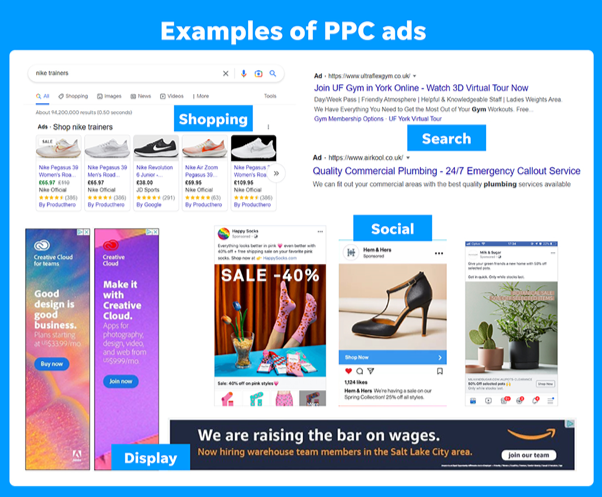
But PPC ads in 2025 are very different from what they used to be. Today, Google and other Search Engines offer us advanced PPC ad capabilities.
These include:
- The use of AI for predictive audience targeting, dynamic ad creation, and bidding optimization.
- The rise of social media ads in video as well as post formats.
- Collaborative filtering, which groups customers with similar interests together to create customer clusters.
- The widespread use of YouTube ads + the mainstreaming of smart TVs that put YouTube on their home screen tabs.
How to Use PPC Ads For Digital Marketing in 2025?
As a growth marketing agency, we believe that well-placed PPC ads can make a huge difference to your overall marketing strategy. Here’s how we recommend you go about it:
- Starting using Google Ads analytics to measure the real-time performance of your ads
- Target the keywords that your competitors are ranking for with PPC ads
- Use AI automation tools and data analysis to identify niche customer segments for high PPC ROI.
One important thing to note is that PPC ads are about more than just positioning. They’re also about the content and the copy. We highly recommend A/Z testing your ads for optimal results.
Another exciting development in the world of PPCs is that the cost of ads is going up, which means that cost-per-click is increasing. However, the good news is that Bing is making a comeback as a real alternative to Google!
This means that Bing, through search engines like DuckDuckGo, will make a leap forward in terms of traffic, usage, and ads! We suggest experimenting with Bing ads to see if there’s a real and measurable difference in PPC ROI.
7. LinkedIn Marketing
LinkedIn is a hub of B2B communication with more than a billion decision-makers connecting with each other and expanding their professional networks.
But it’s more than that: it’s the perfect place for B2B digital marketing! Think about it: if customers are justified in looking to social media for purchasing advice, shouldn’t B2B prospects also look at corporate social media for information leading to their next purchase?
But there are many other reasons why LinkedIn ads can make a huge difference to your digital marketing strategies:
- You can identify the right target accounts yourself through Sales Navigator’s search filters.
- With In-Mail and sponsored messages, you can directly reach key decision-makers within your target organization.
You have a lot of different options through which you can show ads to your target audience.
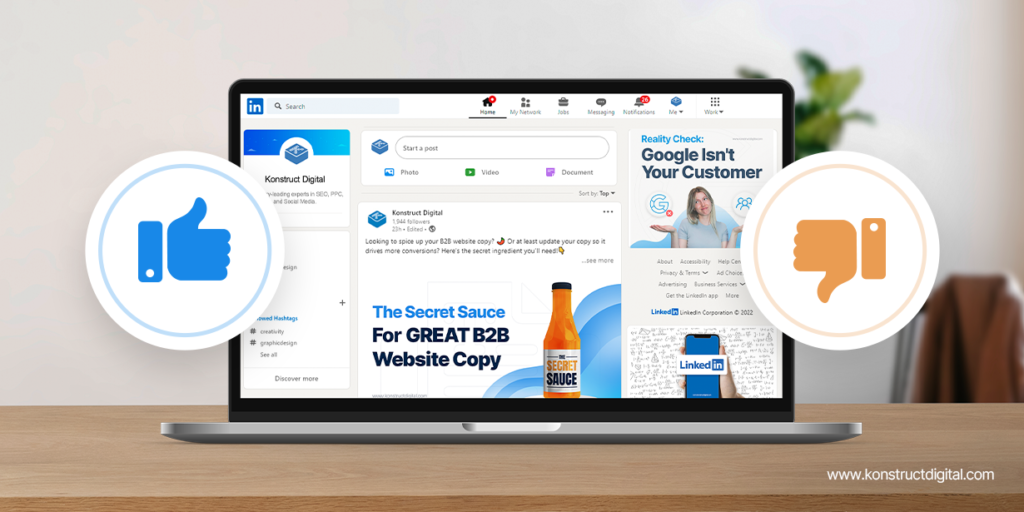
But, too many options can also lead to a lot of confusion about which strategy might be ideal for your marketing purpose. Don’t worry, here’s a detailed breakdown of different ads and how you can use them:
- You can use Single Image Ads to empathize with a client’s pain points and lead them to your product/solutions page.
- Carousel Ads are perfect if you want to advertise a catalog of your products and services.
- Video Ads are most suited to sharing how your product can solve client needs. It’s also good for storytelling ads that present a pain point, your solution and how the client can go from the former to the latter.
- We recommend using Event Ads to invite prospects to an online or offline event where they can engage with industry experts and thought leaders.
- Message ads might be highly impactful if you have intent-based information on your prospects’ exact needs. They will also work very well if you have a reference!
- If you’re looking to increase your website traffic, we suggest Spotlight Ads. They’ll lead your target audience to any landing page of your choice.
In short, when it comes to LinkedIn, you have a wide range of diverse options to choose from. We recommend creating a problem-solution matrix and choosing an ad form that best matches your purpose.
8. Voice Search Optimization
One of the most recent developments in the world of search is voice search. As of 2025, one in four people use voice search on their mobile devices. The percentage of people using voice search to find local businesses is especially high, with nearly 60% using it on a daily basis.
From what we’ve seen over the last five years, Google uses text-to-voice conversions to make most content available through voice search.
How to Use Voice Search for Digital Marketing?
Now, you might be wondering how exactly you can optimize your content to make it more visible to voice searches. Here are a few recommendations based on our experience:
- Use long-tail keywords to address user queries
- Keep the language of your content as simple as possible
- Frame H2s as questions, focusing on “What,” “How,” and “Why” questions
- Include FAQs with your content
- Use structured data to markup business information, FAQs, and product details
- Optimize your content for featured snippets for high visibility
The good thing about these optimizations is that they will also contribute to the overall visibility of your content and website.
9. Image Search Optimization
Today, we live in an era where cars can drive themselves and detect obstacles from images by comparing them with historical data. So, what’s true for increasing popularity of Voice Search is also true for Image Search, only more!
So much so that nearly a billion people use voice search every day.
Look at it this way: if you see a product you really like and need to know where you can get it, the easiest way is to snap a picture of it and look for similar images online. There’s a high chance that you’ll find a seller offering the exact product!
This is down to accelerating developments in the field of image recognition and machine vision technology. Plus, people are more likely to interact, learn and shop visually compared to textually. Images are more accessible, intuitive to grasp and stand out from a bunch of text.
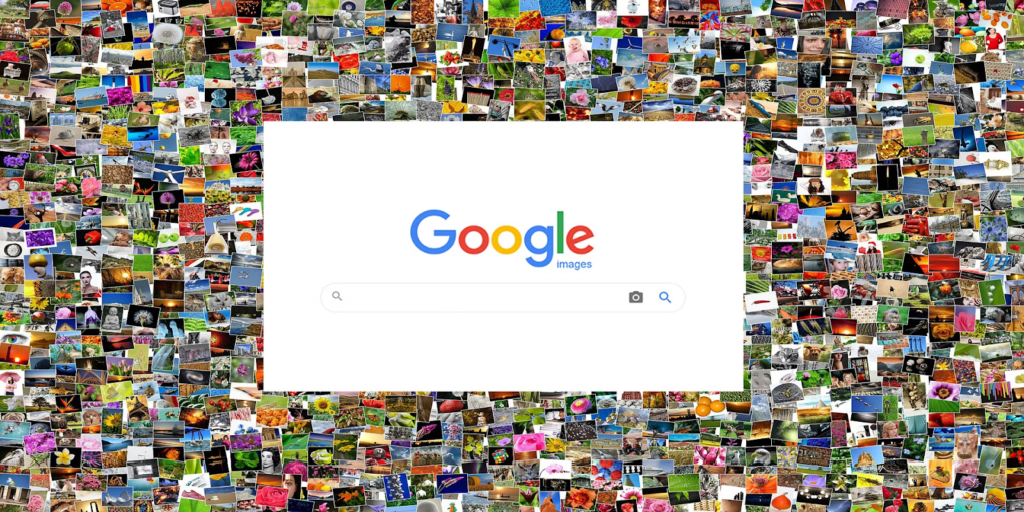
So, if you’re creating a digital marketing strategy in 2025, image optimization is a must!
How to Use Image Search for Digital Marketing?
Here’s how we suggest you optimize your content for image search in 2025:
- Accompany product pages and descriptions with extremely vivid and clear images
- Use meta tags to clearly communicate the contents of your images
- Align image dimensions with your website design
- Keep the file sizes small by using compression techniques
- Create a clearly defined sitemap so that search engines can quickly index your images
Remember, your goal is to ensure that Google is easily able to index, locate and display your images to the users.
10. Traditional SEO
In late 2024 and early 2025, there were several proclamations that SEO was dying. This was largely due to the dip in global website traffic as a result of Google introducing AI overviews.
However, these reports were exaggerated. Why? Well, as we’ve discussed, while it is great at presenting information, AI can’t create information from scratch. At the end of the day, AI has to rely on humans to present it with relevant information in each case.
Another reason why SEO is important is that AI tools like ChatGPT and DeepSeek will rely on Google and Bing search engines to train their AI algorithms. So, investing in SEO is like investing in future visibility of your website!
So, it’s safe to say that the State of SEO isn’t in danger. However, it’s equally true that its parameters have changed. While previously SEO meant focus on content and presentation, its scope has now widened to include media and AI optimization.
Let’s find out how we can convert this change into an opportunity…
How to Use SEO for Digital Marketing in 2025?
- Focus on technical SEO by cleaning up meta data and creating a clear sitemap for faster indexing
- Create fast loading websites to reduce indexing time and reducing your website’s crawl budget
- Align your content with EEAT guidelines by including author bios, long-tail keywords, and FAQs
- Since forums are on the rise (they now have a dedicated spot on the SERP), we recommend creating accounts on forums like Reddit
- Backlinking is more important than ever, especially if you want to boost domain authority to increase your website’s visibility
- Create blogs that compare your products and services with your competitors.
- Use AI for simple tasks like keyword research, creating content outlines and checking content for errors
We also highly recommend that you create knowledge graphs. This is because Language Learning Models understand structured data more easily. So, knowledge graphs make your website “visible” to search engine crawlers.
11. Social Media Engagement
The average person scrolls social media for nearly two hours a day. For this reason, social media is one of the most important tools for digital marketing in 2025. After all, whether you want to focus on influencer marketing or video content, the medium of delivery is the same: social media.
Now, there’s an argument to be made that one small mistake in social media management can tank the reputation that you’ve curated for years and years. After all, it only takes one bad interaction to go viral for your brand to take a hit, right?
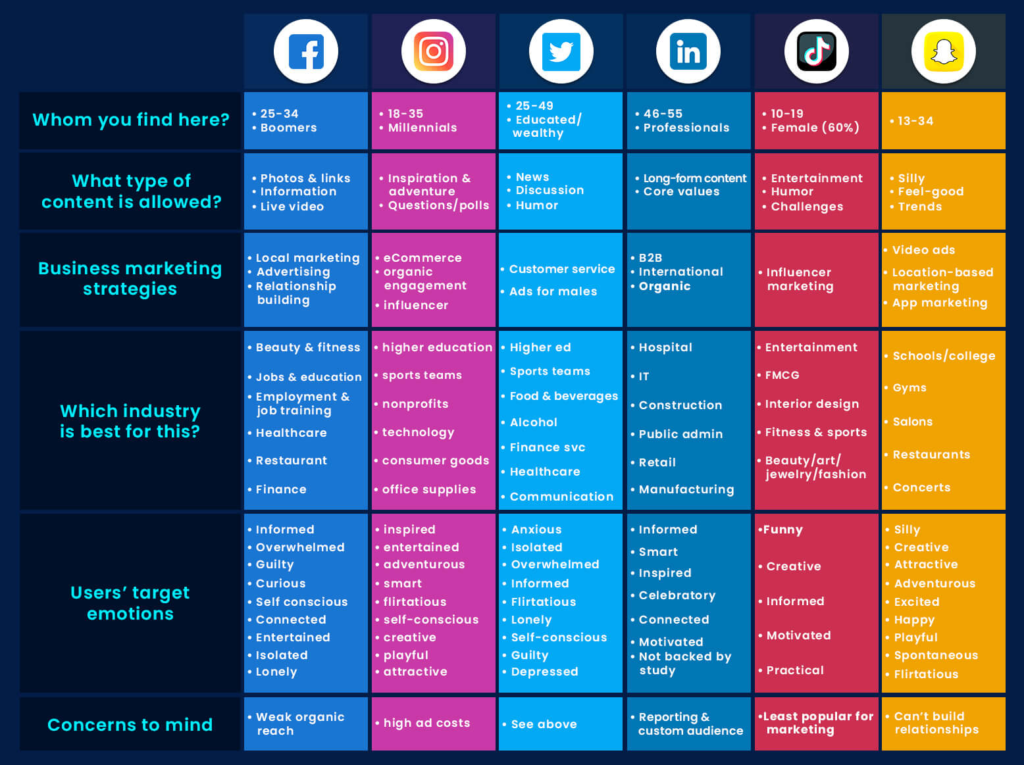
Well, there’s some truth to that. But, that doesn’t mean that you should not have a social media presence altogether. Why? For one, it means you’ll be conceding ground to your competitors. For another, users are more likely to trust you if you have a solid social media presence.
So, for both comparative and absolute reasons, having a social media presence is beneficial in the long run.
How to Use Social Media Engagement for Digital Marketing?
- Identify and target the channels where most of your customers/clients hang out
- Always reply to users who are trying to communicate with you through your social handles
- Use humor and memes to boost your social presence
- Periodically post updates about your company through your social platform
- Post stories featuring your happiest clients to create a positive social media presence
- Work with influencers to increase followers on social media platforms
If done right, we believe that social selling can become one of the strongest pillars of your digital marketing strategy in 2025 and beyond!
12. Experiential Marketing
Experiential marketing, also known as XM or grassroots marketing, is a strategy that focuses on creating engaging experiences that your customers can identify with.
It involves a combination of offline and online techniques that make the customer a participant in your organization’s growth journey. We believe that experiential marketing is the best way to sell in 2025, and will remain so for the years to come.
From the latest trends, we’ve seen that there are four primary benefits of adopting an experiential marketing strategy:
- Experiences first deliver value to the customers and then try to sell them a product or service (like a free trial.) This helps you build trust and provide solutions before converting a prospect into a client.
- Since experiential marketing focuses on active customer participation, it can help you build an emotional connection with your users. It relies on you delivering authentic experiences that stand out from all others.
- Experiential marketing events act as buying triggers. They remind the viewers of your product/service by embedding them into their perception through memorable experiences.
- There are high chances that your experiential marketing campaign can go viral, and net you windfall gains. And the more consistently you execute experiential marketing campaigns, the higher your chances of going viral!
How to Use Experiential Marketing in 2025?
In our experience, there are five major experiential marketing strategies that you can adopt:
- User-Generated Content (UGC), like CocaCola’s #ShareACoke campaign
- Video content, like tutorials, product demos and content featuring influencers
- Product Testing, like Warby Parker’s “Home Try-On” service
- Incentivising happy clients to post positive Customer Reviews
- A strong social media presence with high engagement and posting frequency
One of the major reasons why experiential marketing stands out to us is that it is capturing the attention of Gen Z on a large scale. And by 2030, they’ll enter the global market with more than a trillion dollars in buying capacity!
So, we suggest you become an early adopter of experiential marketing for long-term benefits…

Scale the Summit of Your Industry with a Robust Digital Marketing Strategy
And breathe!
Through our discussion, we’ve covered the top 12 digital marketing trends in 2025.
From AI to influencer marketing and PPC ads to email outreach, we’ve explored different options that are suited to a diverse range of industries.
So, whether you want to capture the B2B market or establish yourself in the D2C segment, we hope we helped you understand the A-Z of digital marketing in 2025.
However, creating a winning digital marketing strategy can be a daunting task. And that’s where we come in!
At Lean Summits, we have a decade-long experience in creating, planning and implementing successful digital marketing campaigns from start to finish.
Connect with us to find out how we can help you prosper in the age of digital marketing, or explore our services to see if you see a solution you like!
Digital Marketing Trends for 2025: FAQs
1. How much is digital marketing expected to grow in 2025?
Digital marketing is expected to grow by 10-15% annually till 2030. Most of this growth comes as a result of paid social media advertising, AI integration, and an increased focus on user experience. We believe that experiential marketing will lead the growth of digital marketing for the year.
2. Is Digital Marketing Worth it in 2025?
Yes, digital marketing is definitely worth it in 2025. Here’s why we think so:
- There are more smartphone users than ever before
- Most of the organic traffic now comes from mobile users
- More and more people are using image and voice searches to look for products and local businesses
- Buyers feel comfortable relying on social media platforms, influencers and AI to help them make buying decisions
- The global ad spend is set to increase to $1 trillion with a 10% increase from 2024
3. What is the trend in SEO for 2025?
In 2025, companies are all set to focus on the user experience as the main focus of their SEO strategy. Here’s what this means:
- Alignment with EEAT Guidelines by including author bios, FAQs and bulleted lists
- Using sitemaps and knowledge graphs to increase the indexing speed of websites
- Optimization for voice search using LLM guidelines and simple language
- Mobile optimization by focusing on schema markup and media adjustments
- Image optimization by including relevant images and clean metadata
- Technical SEO for faster-loading websites
4. How is Google Changing SEO?
Google’s introduction of AI Overviews has resulted in a dip in global website traffic. However, AI still needs to rely on people to give them the relevant information. So, while SEO is still as relevant as ever, Google has changed the parameters of SEO. We now need to focus on optimizing content using images, simple language, long-tail keywords and clean sitemaps to help the AI rely on our websites to answer user queries.

